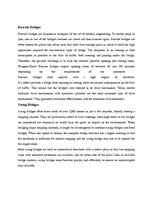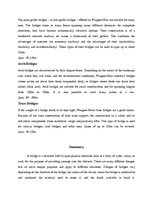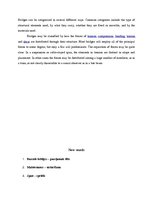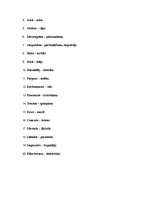Summary
A bridge is a structure built to span physical obstacles such as a body of water, valley, or road, for the purpose of providing passage over the obstacle. There are many different designs that all serve unique purposes and apply to different situations. Designs of bridges vary depending on the function of the bridge, the nature of the terrain where the bridge is constructed and anchored, the material used to make it, and the funds available to build it.
Bridges can be categorized in several different ways. Common categories include the type of structural elements used, by what they carry, whether they are fixed or movable, and by the materials used. Bridges may be classified by how the forces of tension, compression, bending, torsion and shear are distributed through their structure. Most bridges will employ all of the principal forces to some degree, but only a few will predominate. The separation of forces may be quite clear. In a suspension or cable-stayed span, the elements in tension are distinct in shape and placement. In other cases the forces may be distributed among a large number of members, as in a truss, or not clearly discernible to a casual observer as in a box beam.
…
Bascule Bridges Bascule bridges are impressive examples of the art of modern engineering. To enable ships to pass, one or two of the bridge's sections are raised and then lowered again. Bascule bridges are often chosen for places like urban areas that don't have enough space in which to build the high approaches required for conventional types of bridge. Swing Bridges Swing bridges often move loads of over 1,000 tonnes in just a few minutes, thereby freeing a shipping channel. They are particularly suited as river crossings when high street or rail bridges are considered too expensive or would have too great an impact on the environment.






